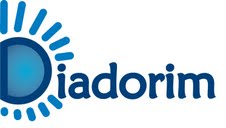QUAL A VERDADEIRA FUNÇÃO DO METILFENIDADO NA MEMÓRIA DE INDIVÍDUOS SAUDÁVEIS?
Resumo
Texto completo:
PDFReferências
RADCLIFFE, C.; LESTER, H. Perceived stress during undergraduate medical training: a qualitative study. Med Educ, [s.l.]: Wiley-Blackwell. v.37, n.1, p.32-38, 2003. Disponível em: . Acesso em: 30 nov. 2015.
PARTRIDGE, B.J. et al. Smart Drugs “As Common As Coffee”: Media Hype about Neuroenhancement. Plos One, [s.l.]: Public Library of Science (PLoS). v.6, n.11, p.1-8, 2011.Disponível em: . Acesso em: 06 nov. 2011.
ROCHA CESAR, E.L. et al. Uso prescrito de cloridrato de metilfenidato e correlatos entre estudantes universitários brasileiros. Revista de Psiquiatria Clinica: Rev Psiq Clín. São Paulo: [s.n.]. v.6, n.39, p.183-188, 2012.
EMANUEL, R.M. et al. Cognitive Enhancement Drug Use Among Future Physicians: Findings from a Multi-Institutional Census of Medical Students. J Gen Intern Med. [s.l.]: Springer Science + Business Media. v.28, n.8, p.1028-1034, 2013.
SILVEIRA, R.R. et al. Patterns of non-medical use of methylphenidate among 5th and 6th year students in a medical school in southern Brazil. Trends In Psychiatry And Psychotherapy, [s.l.]:FapUNIFESP (SciELO). v.36, n.2, p.101-106, 2014. Disponível em: . Acesso em: 16 dez. 2013.
MOTA, J.S. et al. Prevalence of methylphenidate use by university students in Campos dos Goytacazes. Revista Vértices, [s.l.]: GN1 Genesis Network. v.16, n.1, p.101-106, 2014.
HILDT, E.; LIEB, K.; BAGUSAT, C. Reflections on Addiction in Students Using Stimulants for Neuroenhancement: A Preliminary Interview Study. Biomed Research International. [s.l.]:Hindawi Publishing Corporation. v.2015, p.1-7, 2015. Disponível em: . Acesso em: 30 nov. 2015.
FOND, G. et al. Innovative mechanisms of action for pharmaceutical cognitive enhancement: A systematic review. Psychiatry Research, [s.l.]:Elsevier BV. v. 229, n.1-2, p.12-20, 2015. Disponível em: . Acesso em: 30 nov. 2015.
BADDELEY, A. Working Memory. Science, Boston: [s.n.]. v. 255, p.556-559, 1992. Disponível em: . Acesso em: 31 jan. 2015.
KIROVA, A.; BAYS, R.B.; LAGALWAR, S. Working Memory and Executive Function Decline across Normal Aging, Mild Cognitive Impairment, and Alzheimer’s Disease. [s.l.]:Hindawi Publishing Corporation. v.2015, p.1-9, 2015. Disponível em: . Acesso em: 30 nov. 2015.
ADHD: Clinical Practice Guideline for the Diagnosis, Evaluation, and Treatment of Attention-Deficit/Hyperactivity Disorder in Children and Adolescents. Clinical Practice Guideline for the Diagnosis, Evaluation, and Treatment of Attention-Deficit/Hyperactivity Disorder in Children and Adolescents. Pediatrics. [s.l.]: American Academy of Pediatrics (AAP). v. 128, n. 5, p.1007-1022, 16 out. 2011.
IZQUIERDO, I. Memória. Porto Alegre: Artmed, 2002.
STEKETEE, J. Neurotransmitter systems of the medial prefrontal cortex: potential role in sensitization to psychostimulants. Brain Research Reviews, [s.l.]: Elsevier BV. v.41, n.2-3, p.203-228, 2003. Disponível em: . Acesso em: 30 nov. 2015.
CARMACK, S.A. et al. Animal model of methylphenidate's long-term memory-enhancing effects. Learn Mem. v.16, n.21(2), p.82-9, 2014
WOOD, S. et al. Psychostimulants and Cognition: A Continuum of Behavioral and Cognitive Activation. Pharmacological Reviews, [s.l.]:American Society for Pharmacology & Experimental Therapeutics (ASPET). v.66, n.1, p.193-221, 2013.
FRANKE, A.G. et al. Substances used and prevalence rates of pharmacological cognitive enhancement among healthy subjects. Eur Arch Psychiatry Clin Neurosci. [s.l.]: Springer Science + Business Media. v.264, n.1, p.83-90, 2014.
LOOBY, A.; EARLEYWINE, M. Expectation to receive methylphenidate enhances subjective arousal but not cognitive performance. Exp Clin Psychopharmacol. Washington:[s.n.]. v.6, n.19, p.1-21, 2013. Disponível em: . Acesso em: 16 dez. 2011.
ROSTRON, C.L. et al. The effects of methylphenidate on cognitive performance of healthy male rats. Front. Neurosci. [s.l.]: Frontiers Media SA. v.7, p.1-15, 2013.
LINSSEN, A.M.W. et al. Methylphenidate produces selective enhancement of declarative memory consolidation in healthy volunteers. Psychopharmacology. [s.l.]: Springer Science + Business Media. v.221, n.4, p.611-619, 2011.
URBAN, K.R.; GAO, W. Performance enhancement at the cost of potential brain plasticity: neural ramifications of nootropic drugs in the healthy developing brain. Front. Syst. Neurosci. [s.l.]:Frontiers Media SA. v.8, p.1-10, 2014.
Apontamentos
- Não há apontamentos.
Direitos autorais 2016 Revista UNILUS Ensino e Pesquisa - RUEP
ISSN (impresso): 1807-8850
ISSN (eletrônico): 2318-2083
Periodicidade: Trimestral
Primeiro trimestre, jan./mar., submissões até 31 de março, publicação da edição até 15 de agosto.
Segundo trimestre, abr./jun., submissões até 30 de junho, publicação da edição até 15 de outubro.
Terceiro trimestre, jul./set., submissões até 30 de setembro, publicação da edição até 15 de janeiro.
Quarto trimestre, out./dez., submissões até 31 de dezembro, publicação da edição até 15 de abril.

Este obra está licenciado com uma Licença Creative Commons Atribuição-NãoComercial-SemDerivações 4.0 Internacional.
Indexadores
Estatística de Acesso à RUEP
Monitorado desde 01 de dezembro de 2025.
Monitorado desde 22 de novembro de 2016.













